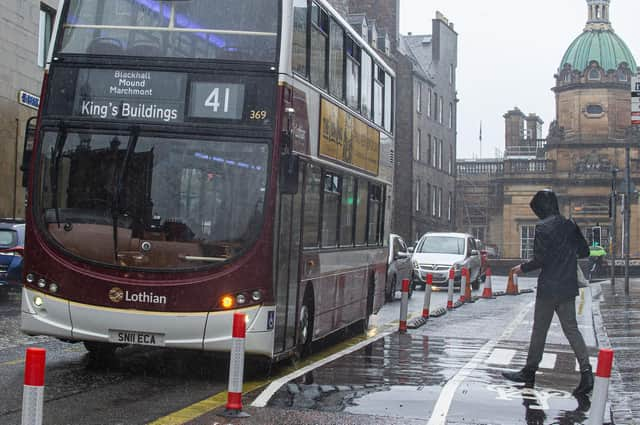Edinburgh's Spaces for People scheme: Public consultation must be serious if changes are to become permanent – Steve Cardownie


Given permission (and the money) from the Scottish government to bring in temporary traffic measures, the council was always going to take the opportunity to leave them in place once they had been established.
Transport Scotland says that “the Scottish government is issuing this guidance on temporary traffic regulation orders and notices in Scotland during the period public health measures are in place to reduce transmission of coronavirus (Covid-19). It has been produced in response to requests from local authorities regarding ongoing physical distancing measures and the potential need to close roads to traffic or reallocate road space in favour of pedestrians and cyclists, allowing for physical distancing measures.”
Advertisement
Hide AdAdvertisement
Hide AdAlthough this guidance spells out that the measures to be introduced are solely intended to deal with Covid-19 and the need for extended social distancing, it provided the excuse many councillors were waiting for to introduce changes to the traffic infrastructure landscape of the city on a more permanent basis.
That they could be disguised as temporary emergency measures was not going to be an opportunity that they were likely to pass up and TTROs were used to progress their agenda.
The guidance referred to above also spells out that “traffic authorities may make temporary traffic regulation orders covering their roads for a number of reasons for up to 18 months”, going on to state that “TTROs require no prior consultation and are relatively flexible so there is the potential for local authorities to assess and put in place temporary measures relatively quickly and responsively”.
So this gives local councils the green light to circumvent the consultation requirements associated with permanent traffic orders. This is the nub of the problem!
Advertisement
Hide AdAdvertisement
Hide AdSome local communities are upset that the emergency introduction of these traffic measures has not allowed for meaningful consultation and where objections have been raised they have largely been ignored, unless accompanied with the threat of a legal action should the council proceed.
Community groups have sprung up in East Craigs and south-west Edinburgh to mount a challenge to the schemes imposed in their areas and, given that the council pledged to work in “collaboration” with local communities, it appeared that this was not what was happening on the ground.
The council has now signalled that it is about to introduce a public consultation exercise in an effort to determine which aspects of the new road layouts should remain and which should revert to their former status – or so it says.
The method of consultation to be adopted is yet to be spelled out but the requirements of a permanent traffic order must surely be the minimum if the public is to have any confidence that it is indeed an objective, genuine exercise and not just window dressing for measures that have already been predetermined in the corridors of the City Chambers.
Advertisement
Hide AdAdvertisement
Hide AdMany of the aspects of the Spaces for People programme are commendable but some may be flagged up by objectors as flawed. How the council deals with this will shed a light on just how serious it is in working in “collaboration” with local communities.
A message from the Editor:
Thank you for reading this article. We're more reliant on your support than ever as the shift in consumer habits brought about by coronavirus impacts our advertisers.
If you haven't already, please consider supporting our trusted, fact-checked journalism by taking out a digital subscription.
Comment Guidelines
National World encourages reader discussion on our stories. User feedback, insights and back-and-forth exchanges add a rich layer of context to reporting. Please review our Community Guidelines before commenting.
